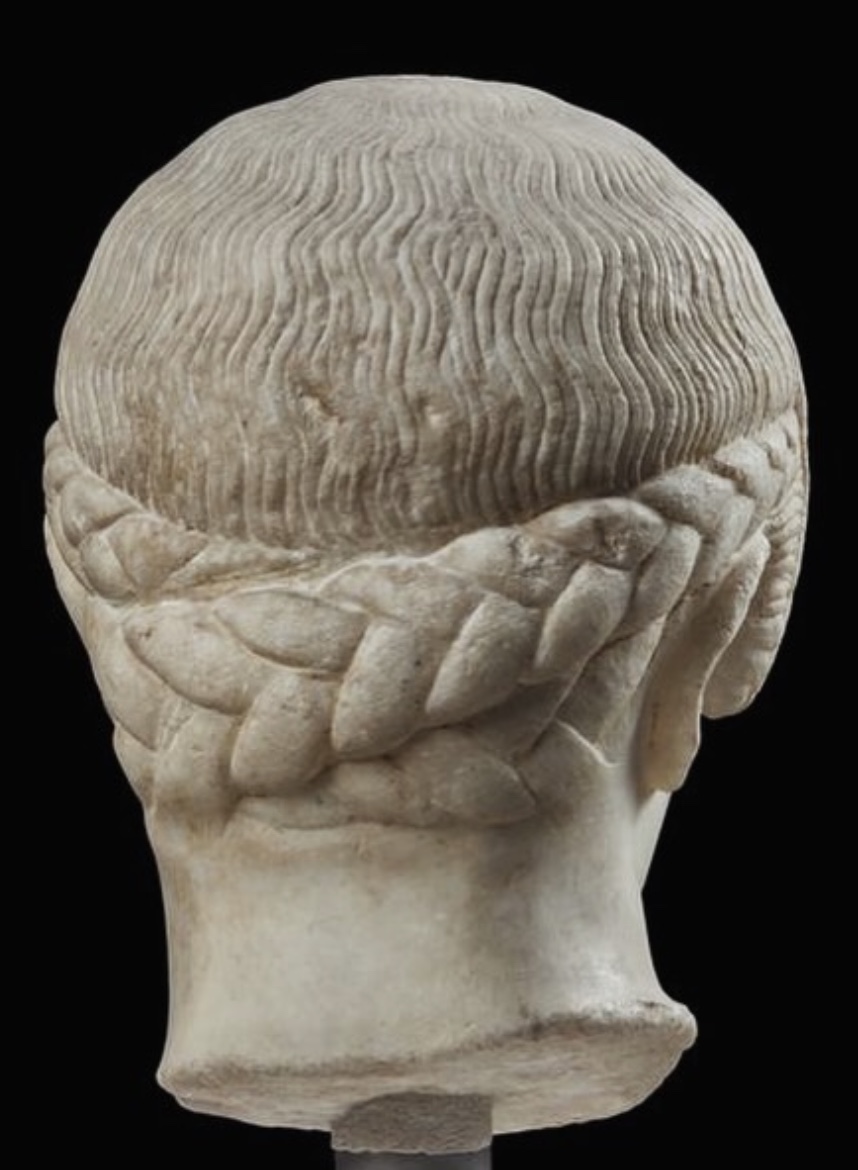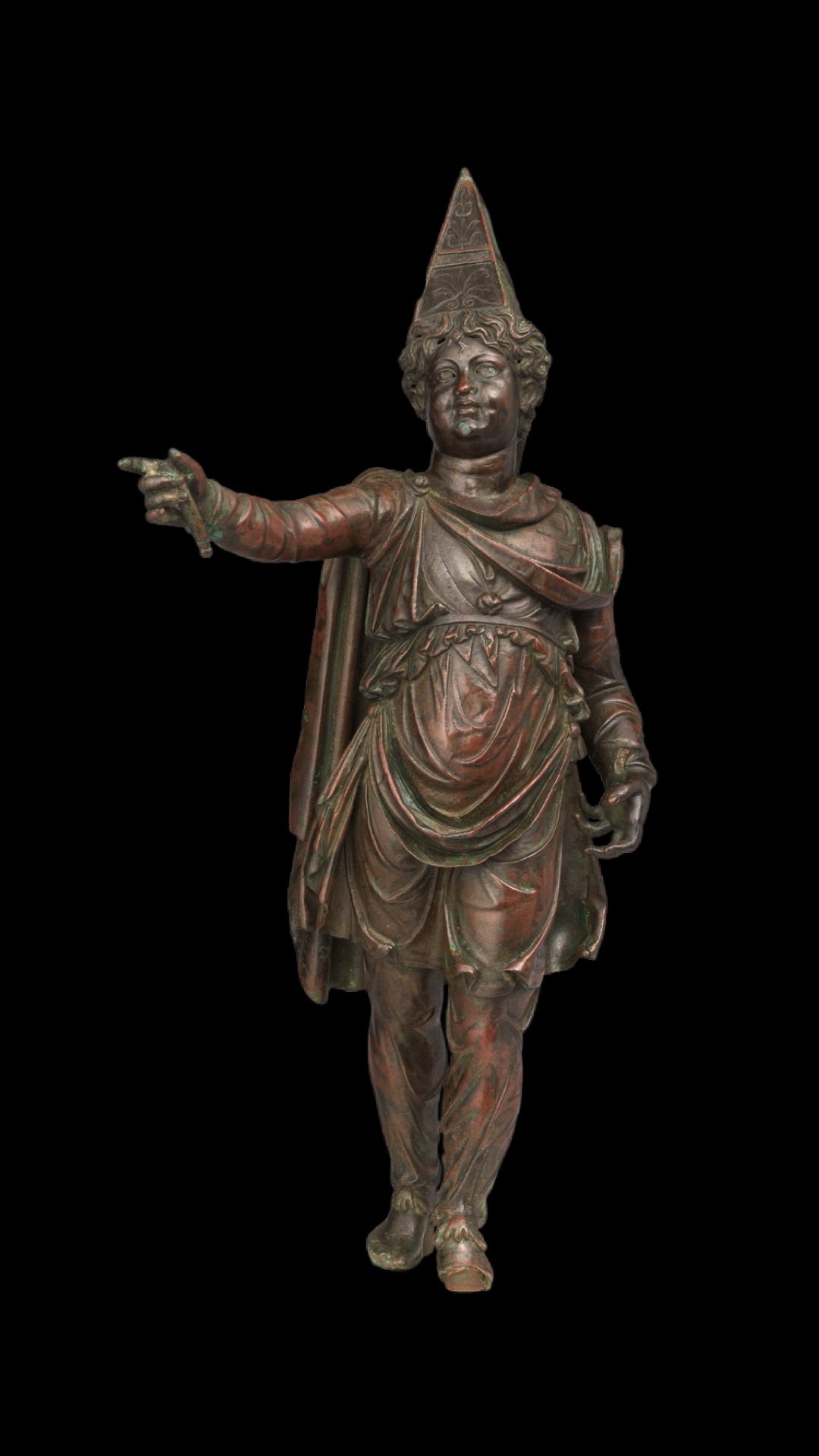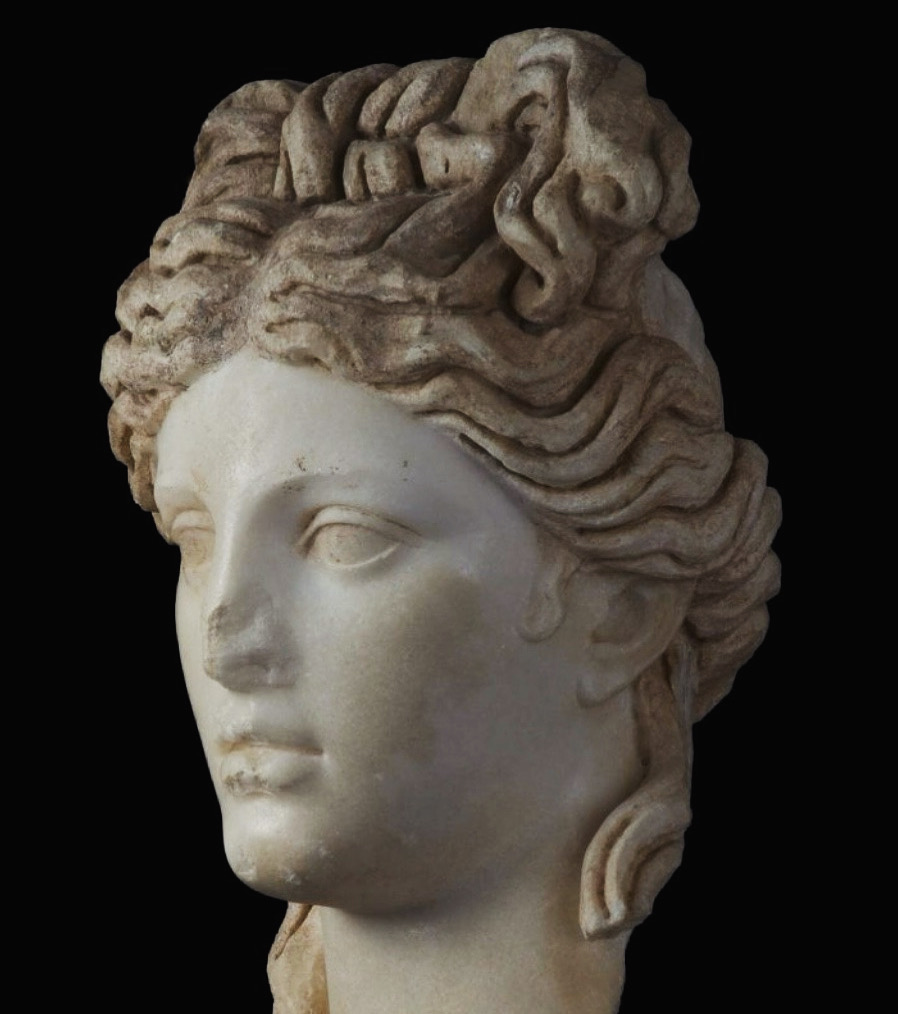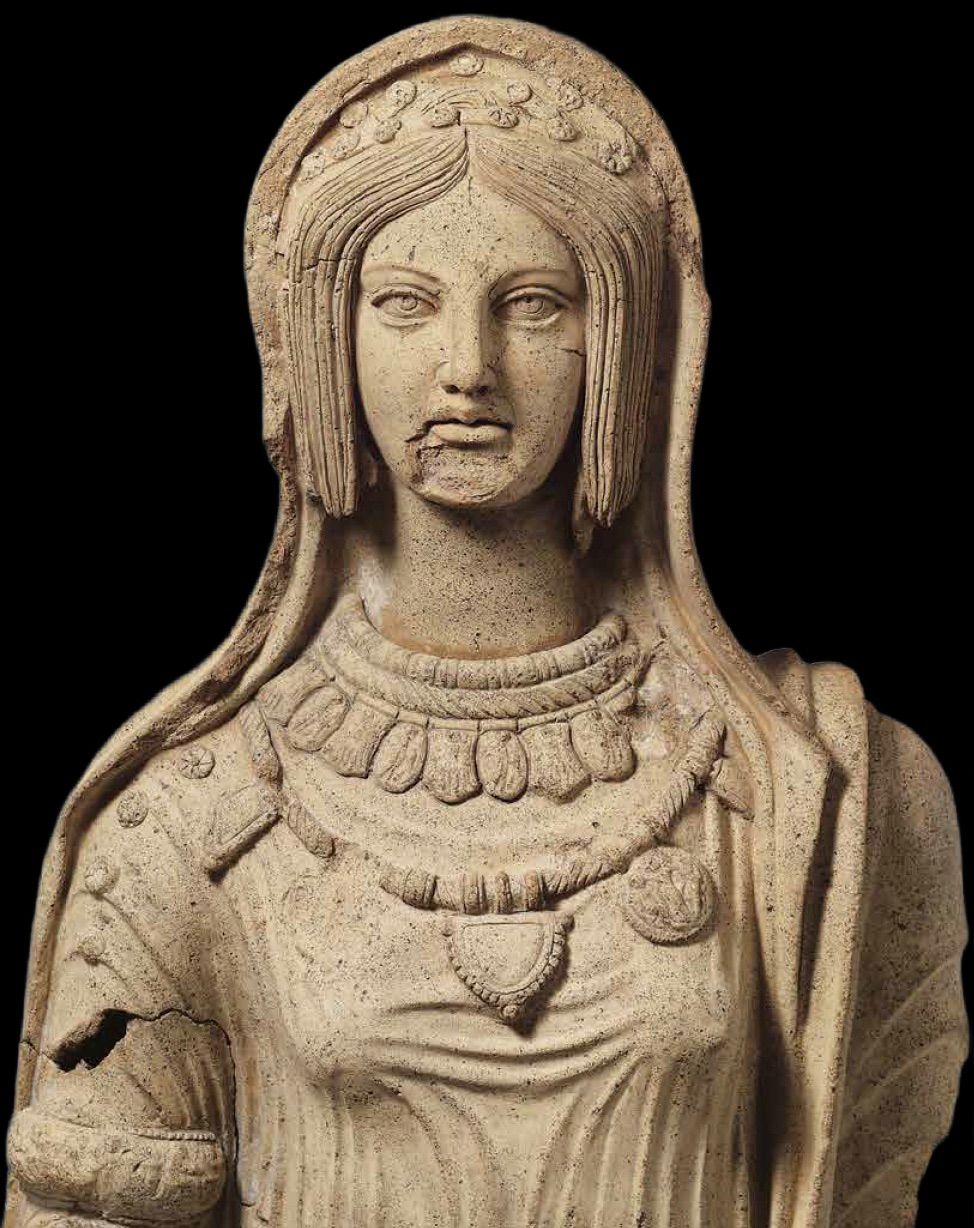Chances are you’ve seen this brooding fellow before – he’s the ‘Blonde Boy’ from the Athenian Akropolis, with the nickname stemming from an ephemeral yellow pigment in his hair when he was excavated in late 19th century. The head had been buried in one of the pits of sculptural debris (Perserschutt!) left over from the Persian ransacking of the city in 480 B.C.
A lot has been written about his sullen expression (he’s basically the poster boy for the slightly cold, gloomy countenances of Early Classical ‘Severe Style’), but I’m really interested in his hairstyle, and what it says about Athenian adolescence.
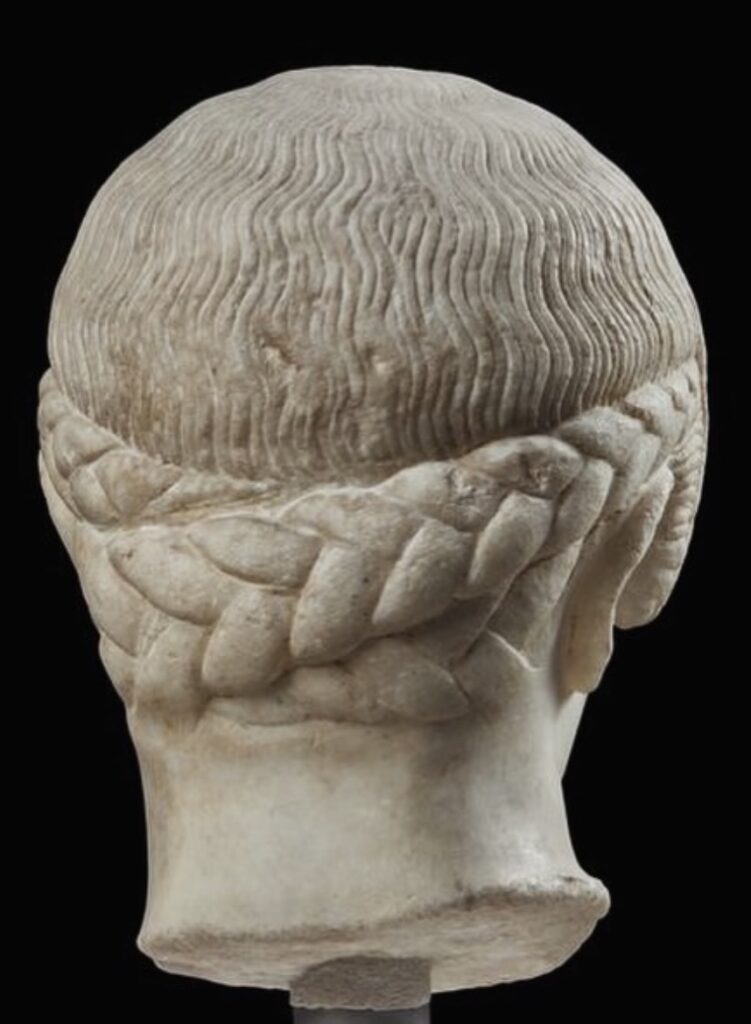
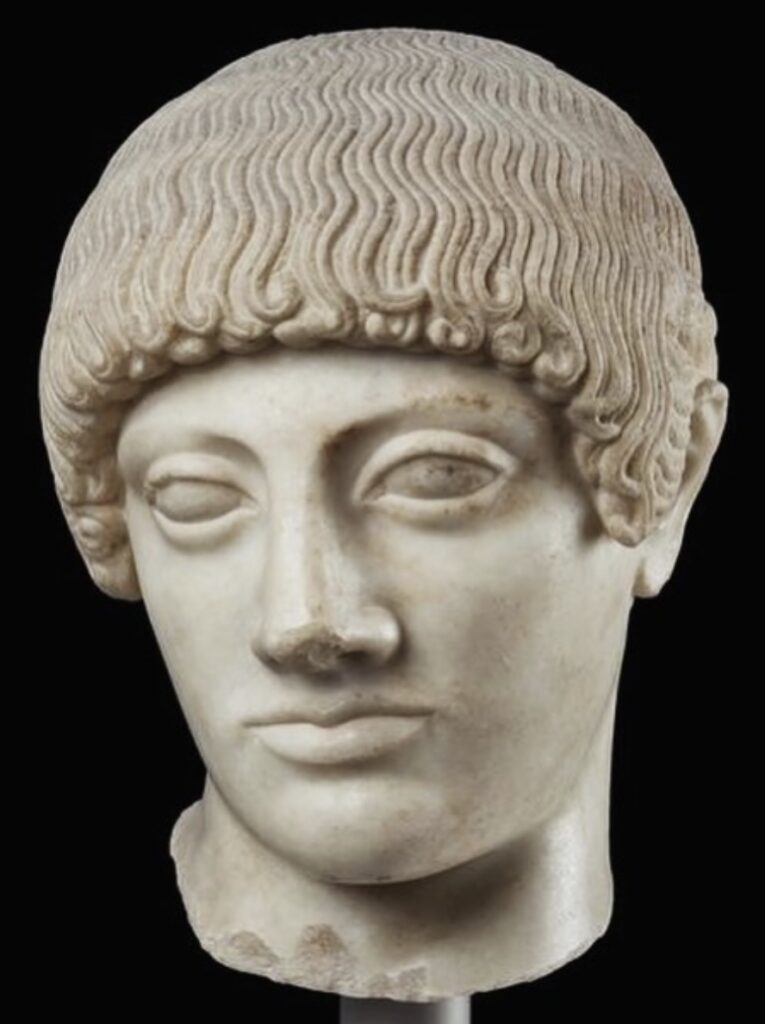
Juicy braids begin at his temples to be gathered behind, while the front hair has been cut into a thick fringe. His smooth cheeks place him at the cusp of manhood and this is what’s happening with his fancy hairdo too: young Athenian boys traditionally grew their hair long, cutting the forelock and dedicating it to tutelary deities when they achieved manhood. Here the ostentatious arrangement of hair (long and short) highlights this crucial transition (age and status). Cool eh?
Further complicating these hairy matters is the fragmentary torso found nearby and often associated with the head (fifth photo)..the very developed musculature and neatly trimmed pubic hair is fully adult, even as his face remains beardless.

